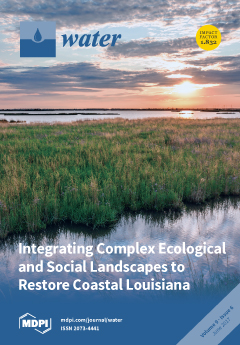Surfactants released into the terrestrial environment in large amounts can potentially alter the physical, chemical and biological properties of soils, particularly the saturated hydraulic conductivity (
Ks). Unfortunately findings regarding this process are quite limited. In this study, column tests were
[...] Read more.
Surfactants released into the terrestrial environment in large amounts can potentially alter the physical, chemical and biological properties of soils, particularly the saturated hydraulic conductivity (
Ks). Unfortunately findings regarding this process are quite limited. In this study, column tests were used to analyze the effects of Aerosol 22, a widely used anionic surfactant, on
Ks of loamy sand and sandy loam soils. Solutions were injected into columns from the bottom with controlled pressure heads. Both the overall
Ks of columns and the
Ks of 6 layers at distances of 0–1 cm, 1–3 cm, 3–5 cm, 5–7 cm, 7–9 cm, and 9–10 cm from the bottom, were continuously monitored before and after the surfactant injections. Results showed that the overall
Ks of all columns decreased after 2–4 pore volumes of the surfactant injections. However, stabilization and even increase at the beginning of the surfactant injection was also observed due to the different
Ks variations in different layers. Specifically, a surfactant injection of 2–4 pore volumes continuously decreased the
Ks of the 0–1 cm layers which yielded a
Ks reduction of two orders of magnitude and dominated the
Ks variations of the column. In contrast, an increase in the
Ks of the 1–3 cm and 3–5 cm layers was more likely, while
Ks variation of the 5–10 cm layers was less likely. We hypothetically attributed the
Ks variations to the swelling of clay, the collapse of soil aggregates and subsequent particle displacements from surfactant adsorption, which caused pore clogging in the bottom 0–1 cm layer and higher porosities in the layers above. The adsorption of the surfactant aggregates and crystallization were also possibly thought to cause a pore clogging in the bottom layer thus decrease the surfactant concentration from the inlet, the severity of which affects these layers less at greater distances from the inlet. In view of the uncertainty showed by the experimental results, we also suggest to include more replicate columns in future studies, so as to increase the repeatability of the measurements.
Full article





